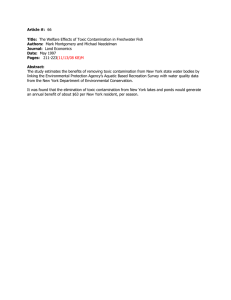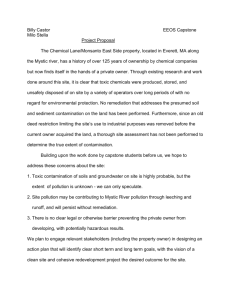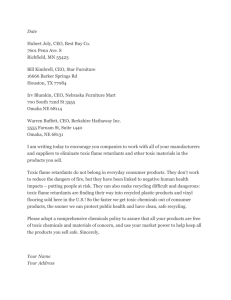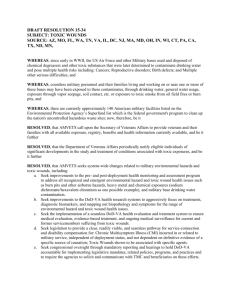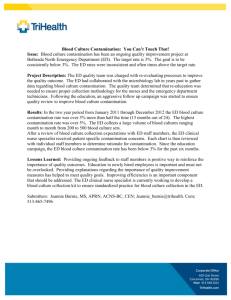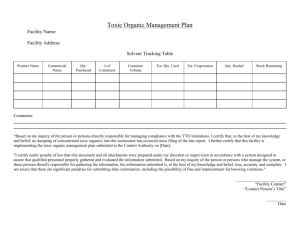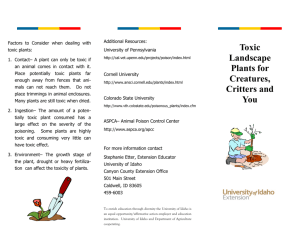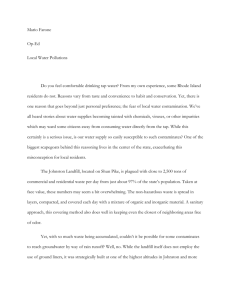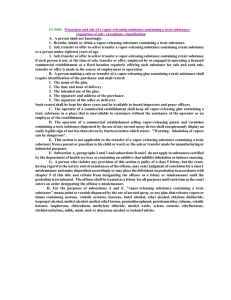Many different responses are possible in the event toxic waste
advertisement
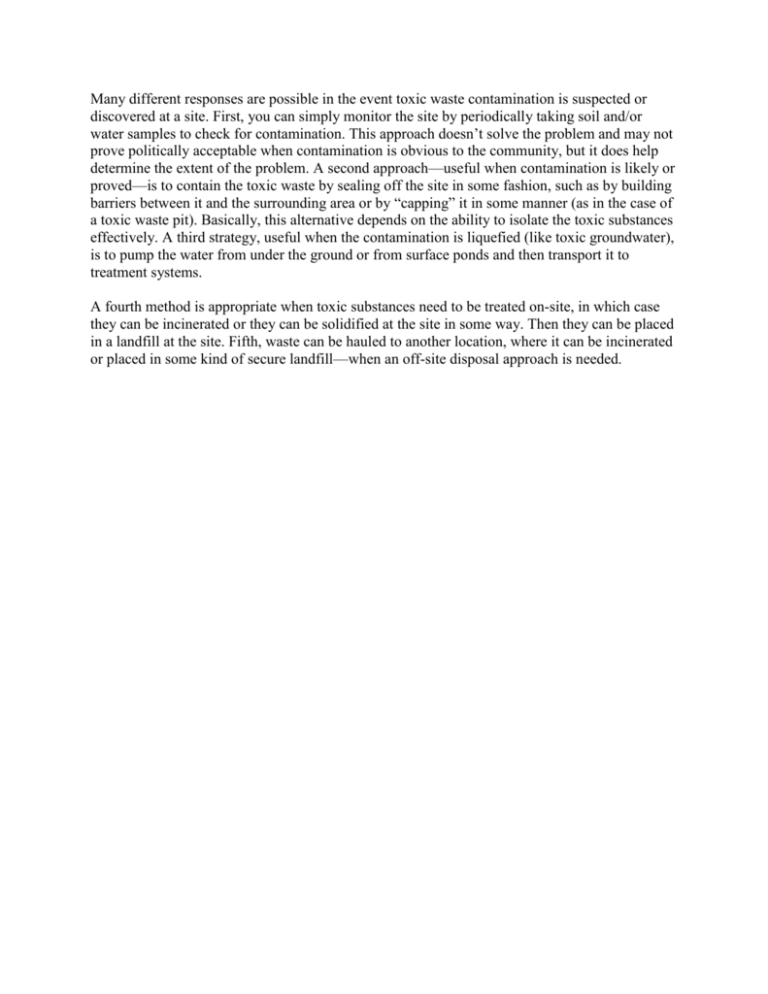
Many different responses are possible in the event toxic waste contamination is suspected or discovered at a site. First, you can simply monitor the site by periodically taking soil and/or water samples to check for contamination. This approach doesn’t solve the problem and may not prove politically acceptable when contamination is obvious to the community, but it does help determine the extent of the problem. A second approach—useful when contamination is likely or proved—is to contain the toxic waste by sealing off the site in some fashion, such as by building barriers between it and the surrounding area or by “capping” it in some manner (as in the case of a toxic waste pit). Basically, this alternative depends on the ability to isolate the toxic substances effectively. A third strategy, useful when the contamination is liquefied (like toxic groundwater), is to pump the water from under the ground or from surface ponds and then transport it to treatment systems. A fourth method is appropriate when toxic substances need to be treated on-site, in which case they can be incinerated or they can be solidified at the site in some way. Then they can be placed in a landfill at the site. Fifth, waste can be hauled to another location, where it can be incinerated or placed in some kind of secure landfill—when an off-site disposal approach is needed.
